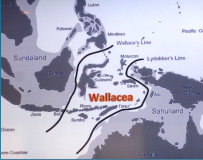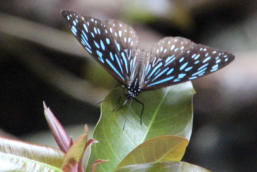Wildlife and Flora
The Bird’s Head Seascape is the name given to the rich marine area that surrounds the north-western tip of West Papua, known as the Bird’s Head Peninsula. The Bird’s Head Seascape covers a vast area of over 180,000 sq km, with some 2500 islands & reefs, and in that area are the main islands of Raja Ampat, the Dampier Strait, the Kaimana area and the huge expanse of Cenderawasih Bay. It is a snorkelling and diving paradise. Life under the water more than makes up for the lack of seeing many birds and land creatures - we saw very few of the 550 species of bird that inhabit this part of the world and even fewer land creatures. There are more than 1400 species of coral reef fish and more than 600 species of hard coral – 75% of the total for the entire world. There are 6 species of rare and endangered sea turtles including the hawksbill sea turtle, 13 marine animal species 700 species of mollusc, including 7 giant clam species and 57 species of mantis shrimp.

© Nova Fisher, novatravels.net. Many underwater photos are copyright of fellow travellers, Cory & Gwynn Wiliams

Explorers
Despite being on the opposite side of the planet, these far eastern islands of Indonesia have long been an attraction for British travellers. Sir Francis Drake sailed there in search of nutmeg, cinnamon and cloves. 300 years later, Alfred Russell Wallace, naturalist and evolutionary theorist, explored the abundant forests returning home with over 125,000 specimens of flora and fauna. The Wallace line is a faunal boundary line drawn in 1859, that separates the ecozones of Asia and Wallacea, a transitional zone between Asia and Australia. Wallace noticed this clear dividing line during his travels through the East Indies in the 19th century. The line runs through Indonesia, between Borneo and Sulawesi (Celebes); and through the Lombok Strait between Bali (in the west) and Lombok (in the east).





































